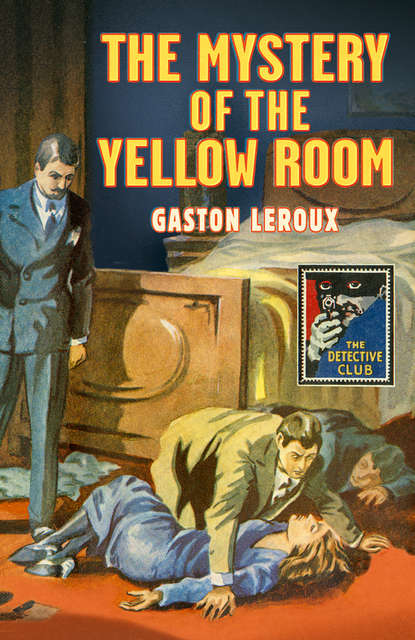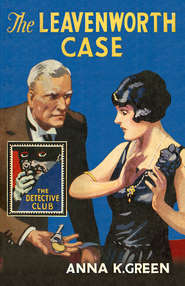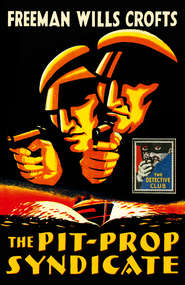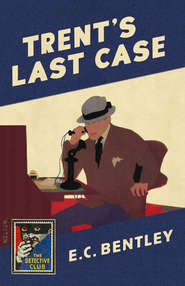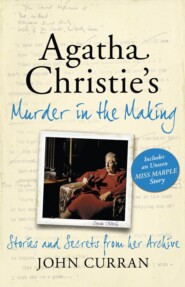По всем вопросам обращайтесь на: info@litportal.ru
(©) 2003-2024.
✖
The Mystery of the Yellow Room
Автор
Год написания книги
2019
Настройки чтения
Размер шрифта
Высота строк
Поля
XXIV. ROULETABILLE KNOWS THE TWO HALVES OF THE MURDERER (#litres_trial_promo)
XXV. ROULETABILLE GOES ON A JOURNEY (#litres_trial_promo)
XXVI. IN WHICH JOSEPH ROULETABILLE IS AWAITED WITH IMPATIENCE (#litres_trial_promo)
XXVII. IN WHICH JOSEPH ROULETABILLE APPEARS IN ALL HIS GLORY (#litres_trial_promo)
XXVIII. IN WHICH IT IS PROVED THAT ONE DOES NOT ALWAYS THINK OF EVERYTHING (#litres_trial_promo)
XXIX. THE MYSTERY OF MADEMOISELLE STANGERSON (#litres_trial_promo)
Footnote (#litres_trial_promo)
Keep Reading … (#litres_trial_promo)
The Detective Story Club (#litres_trial_promo)
About the Publisher (#litres_trial_promo)
INTRODUCTION (#ulink_bd128f0d-34d6-536e-863e-5019a4e497ca)
WHAT greater recommendation can be accorded The Mystery of the Yellow Room than the whole-hearted approval of Hercule Poirot? In his 1963 case, TheClocks, he discusses, in Chapter XIV, his forthcoming magnumopus on detective fiction:
‘And here is The Mystery of the Yellow Room. That—that really is a classic! I approve of it from start to finish. Such a logical approach! … All through there is truth, concealed with a careful and cunning use of words … Everything should be clear at that supreme moment when the men meet at the angle of three corridors.’ He laid it down reverently. ‘Definitely a masterpiece …’
This, to some extent, reflects Agatha Christie’s own views, as expressed in AnAutobiography. Discussing her reading influences in Part IV Chapter VII, she notes ‘… The Mystery of the Yellow Room, which had just come out, by a new author, Gaston Leroux, with an attractive young reporter as detective—his name was Rouletabille. It was a particularly baffling mystery, well worked out and planned …’ Writing of her early titles she notes that ‘The Murder on the Links was slightly less in the Sherlock Holmes tradition, and was influenced, I think, by The Mystery of the Yellow Room. It had rather that high-flown, fanciful type of writing.’ Apart from its French setting, it is difficult to see what influence Leroux’s novel had on Poirot’s investigation of the murder of Monsieur Renaud at the Villa Geneviève in Merlin-sur-Mer. But a more telling similarity can be found in an early draft of the final chapter of The Mysterious Affair at Styles, in which Poirot, in a manner paralleling the Yellow Room’s detective, explains the deductions which led to his identification of the murderer of Emily Inglethorp. At the request of her publisher she changed the manner of Poirot’s exposition, not only because of its possible similarity to the Leroux novel but also—despite its undoubted dramatic impact—because of its legal feasibility.
The Mystery of the Yellow Room first appeared in the French newspaper L’Illustration between September and November 1907, and in book form the following year. It was the first novel of a writer already well-known in France for his international newspaper journalism in L’Echo de Paris and Le Matin.
Gaston Leroux was born in Paris in May 1868 and completed his schooling in Normandy. He returned to Paris to study Law, graduating in 1889. Becoming disillusioned with the judicial system, he turned his not inconsiderable abilities to journalism, first as a theatre critic and court reporter for L’Echo. Subsequent, more significant, journalism at Le Matin included coverage of the infamous Dreyfus affair, the 1905 Russian Revolution and the 1906 eruption of Vesuvius; other stints included time in Morocco and Turkey. A further career-change saw him turn to fiction and The Mystery of the Yellow Room was the first of almost forty novels before his death in Nice in 1927.
The novel’s detective, Joseph Rouletabille, is one of the youngest in the pantheon of Great Detectives. The novel’s narrator is the self-effacing Jean Sainclair, who tells how he first met Rouletabille when the journalist was sixteen-and-a-half and already involved in solving a high-profile murder case, ‘the affair of the woman cut in pieces in the Rue Oberskampf’. His precocity impressed the editor of L’Epoque newspaper who offered him a post and, thereby, an entrée into the world of crime detection. At the time of The Mystery of the Yellow Room he is a mere eighteen! His real name is Joseph Josephine and his nickname—Rouletabille, because his head is as round as a bullet—was bestowed by his fellow-journalists and ‘his good humour enchanted the most severe tempered and disarmed the most zealous’ of them. We discover more about his antecedents—and the explanation of his rather peculiar real name—in the course of his second case, The Perfume of the Lady in Black (1908). (There are quite a few references throughout The Mystery of the YellowRoom to this follow-up novel.)
The Mystery of the Yellow Room is set in 1892, principally in the Château du Glandier, the home of the chemist Professor Stangerson and his daughter, and assistant, Mathilde; they are working on his theory of ‘the dissociation of matter’ by electrical impulses that would contradict the law of ‘the conservation of matter’, a theory that might explain the ability of the novel’s villain to (seemingly) appear and disappear at will. The ‘yellow room’ of the title is Mademoiselle Mathilde’s bedroom, adjoining the laboratory, where she is attacked and injured by an assailant who immediately vanishes, despite the fact that the room is locked from the inside and no one saw the attacker enter or leave. At a later point an even more baffling disappearance takes place when Rouletabille and the investigating officer, Frédéric Larsan, have, as they fondly imagine, trapped the assailant in the Stangerson house. But he—or she?—manages to evade capture by vanishing almost in front of their astounded eyes, at ‘the angle of the three corridors’, referred to by Hercule Poirot, above.
The scene of each seeming miracle is illustrated by a detailed floor-plan to enable the reader to match wits with the investigators. In fact, there is an implied challenge to the reader in the text accompanying the first illustration: ‘With the lines of this plan and the description of its parts before them, my readers will know as much as Rouletabille when he entered the pavilion for the first time. With him they may now ask: How did the murderer escape from the Yellow Room?’ This foreshadows the ‘Challenge to the Reader’ ploy beloved of many Golden Age writers: Ellery Queen, John Dickson Carr, Rupert Penny, Hugh Austin and Anthony Berkeley interalia. And as if all this is not impressive enough Leroux manages a further surprise when the identity of the villain is revealed in the closing chapters.
Chapter VII explicitly references Edgar Allan Poe and his pioneering short story ‘The Murders in the Rue Morgue’ (1841). And Rouletabille’s case shares elements with that first-ever detective story: the locked bedroom, the female victim, the brilliant detective and his enigmatic narrator friend, and the French setting.
Apart from the Queen of Crime, other detective novelists over the last century have extolled the importance of The Mystery of the Yellow Room as a landmark locked-room novel. John Dickson Carr, long-acknowledged Master of the Locked Room for his remarkable ingenuity in that difficult form, included it in his 1946 list of ‘Ten of the Best Detective Novels’. Carr’s detective, Dr Gideon Fell, discussing detective fiction in Chapter XVII of The Hollow Man (1935), simply calls the novel ‘the best detective tale ever written’. Ellery Queen and critic Howard Haycraft included it in their Haycraft-Queen Definitive Library of Detective-Crime-Mystery Fiction list of 1941 and Julian Symons included it in his ‘Sunday Times Hundred Best Crime Stories’ (1957). And in 1981 Edward Hoch, the US master of the impossible crime short story, conducted an informal poll among locked room aficionados and The Mystery of the Yellow Room came in at Number 3 (three places ahead of an earlier title in this ‘Detective Story Club Classic’ reprint library, The Perfect Crime aka The Big Bow Mystery).
Among over two dozen novels, Leroux’s most famous work is undoubtedly The Phantom of the Opera (1910). The original novel enjoyed only moderate success until the release of a 1925 Hollywood silent film version starring Lon Chaney. The countless adaptations, in every medium, of this tale of love and revenge set in the Paris Opéra attest to its timeless appeal. Ironically, few, if any, could confidently name its author.
Leroux’s other, though far less-well known, contribution to crime fiction was his character Chéri-Bibi, who featured in a series of novels between 1913 and 1926; the exact bibliography is complicated by the fact that some of the original French novels generated two English translations. Chéri-Bibi, real name Jean Mascart, is wrongly convicted of the murder of a wealthy businessman, father of the girl he loves. The novels recount his various adventures as he repeatedly escapes from prison and tries to prove his innocence. There were numerous screen adaptations going back to 1915, including a 1931 Hollywood version, The Phantom of Paris. The earliest screen adaptation of The Mystery of the Yellow Room was a 1919 US silent movie and the most recent a Belgian/French version in 2003.
The Mystery of the Yellow Room is an important contribution to the development of the detective novel for a variety of reasons. First and foremost, it is cleverly plotted and tantalisingly presented, in the manner of the best novels of the approaching Golden Age. The inclusion of detailed maps of the area and floor-plans of the crime scenes, with accompanying hints and challenges to the reader, anticipates later, more sophisticated similar gambits. His Great—though very young—Detective was distinctly original, although it could be argued that his extreme youth militates against credibility. And like all the best detectives, Rouletabille is given to enigmatic utterances, viz. his questions about the victim’s hair in Chapter VI and his observations about a coloured handkerchief in Chapter VII. Leroux’s creation of atmosphere—in, for example, the trap-setting scene in the Stangerson household—is impressive; who does not feel a frisson as the narrator waits in his dark closet, peering out at a moonlit corridor, waiting for … what? And the novel remains, despite its age, as readable as ever.
DR JOHN CURRAN
January 2018
CHAPTER I (#ulink_7c82b080-558d-5613-9ff8-e503106bb7f5)
IN WHICH WE BEGIN NOT TO UNDERSTAND (#ulink_7c82b080-558d-5613-9ff8-e503106bb7f5)
IT is not without a certain emotion that I begin to recount here the extraordinary adventures of Joseph Rouletabille. Down to the present time he had so firmly opposed my doing it that I had come to despair of ever publishing the most curious of police stories of the past fifteen years. I had even imagined that the public would never know the whole truth of the prodigious case known as that of the Yellow Room, out of which grew so many mysterious, cruel, and sensational dramas, with which my friend was so closely mixed up, if, apropos of a recent nomination of the illustrious Stangerson to the grade of grand cross of the Legion of Honour, an evening journal—in an article, miserable for its ignorance, or audacious for its perfidy—had not resuscitated a terrible adventure of which Joseph Rouletabille had told me he wished to be for ever forgotten.
The Yellow Room! Who now remembers this affair which caused so much ink to flow fifteen years ago? Events are so quickly forgotten in Paris. Has not the very name of the Nayves trial and the tragic history of the death of little Menaldo passed out of mind? And yet the public attention was so deeply interested in the details of the trial that the occurrence of a ministerial crisis was completely unnoticed at the time. Now the Yellow Room trial, which, preceded that of the Nayves by some years, made far more noise. The entire world hung for months over this obscure problem—the most obscure, it seems to me, that has ever challenged the perspicacity of our police or taxed the conscience of our judges. The solution of the problem baffled everybody who tried to find it. It was like a dramatic rebus with which old Europe and new America alike became fascinated. That is, in truth—I am permitted to say, because there cannot be any author’s vanity in all this, since I do nothing more than transcribe facts on which an exceptional documentation enables me to throw a new light—that is because, in truth, I do not know that, in the domain of reality or imagination, one can discover or recall to mind anything comparable, in its mystery, with the natural mystery of the Yellow Room.
That which nobody could find out, Joseph Rouletabille, aged eighteen, then a reporter engaged on a leading journal, succeeded in discovering. But when, at the Assize Court, he brought in the key to the whole case, he did not tell the whole truth. He only allowed so much of it to appear as sufficed to ensure the acquittal of an innocent man. The reasons which he had for his reticence no longer exist. Better still, the time has come for my friend to speak out fully. You are going to know all; and, without further preamble, I am going to place before your eyes the problem of the Yellow Room as it was placed before the eyes of the entire world on the day following the enactment of the drama at the Château du Glandier.
On the 25th of October, 1892, the following note appeared in the latest edition of the Temps:
A frightful crime has been committed at the Glandier, on the border of the forest of Sainte-Geneviève, above Epinay-sur-Orge, at the house of Professor Stangerson. On that night, while the master was working in his laboratory, an attempt was made to assassinate Mademoiselle Stangerson, who was sleeping in a chamber adjoining this laboratory. The doctors do not answer for the life of Mlle Stangerson.
The impression made on Paris by this news may be easily imagined. Already, at that time, the learned world was deeply interested in the labours of Professor Stangerson and his daughter. These labours—the first that were attempted in radiography—served to open the way for Monsieur and Madame Curie to the discovery of radium. It was expected the Professor would shortly read to the Academy of Sciences a sensational paper on his new theory—the Dissociation of Matter—a theory destined to overthrow from its base the whole of official science, which based itself on the principle of the Conservation of Energy.
On the following day, the newspapers were full of the tragedy. The Matin, among others, published the following article, entitled: ‘A SUPERNATURAL CRIME’:
These are the only details (wrote the anonymous writer in the Matin) we have been able to obtain concerning the crime of the Château du Glandier. The state of despair in which Professor Stangerson is plunged, and the impossibility of getting any information from the lips of the victim, have rendered our investigations and those of justice so difficult that, at present, we cannot form the least idea of what has passed in the Yellow Room in which Mlle Stangerson, in her night-dress, was found lying on the floor in the agonies of death. We have, at least, been able to interview Daddy Jacques—as he is called in the country—a old servant in the Stangerson family. Daddy Jacques entered The Room at the same time as the Professor. This chamber adjoins the laboratory. Laboratory and Yellow Room are in a pavilion at the end of the park, about three hundred metres (a thousand feet) from the château.
‘It was half-past twelve at night,’ this honest old man told us, ‘and I was in the laboratory, where Monsieur Stangerson was still working, when the thing happened. I had been cleaning and putting instruments in order all the evening and was waiting for Monsieur Stangerson to go to bed. Mademoiselle Stangerson had worked with her father up to midnight; when the twelve strokes of midnight had sounded by the cuckoo-clock in the laboratory, she rose, kissed Monsieur Stangerson and bade him good-night. To me she said “Bonsoir, Daddy Jacques” as she passed into the Yellow Room. We heard her lock the door and shoot the bolt, so that I could not help laughing, and said to Monsieur: “There’s Mademoiselle double-locking herself in—she must be afraid of the Bête du bon Dieu!” Monsieur did not even hear me, he was so deeply absorbed in what he was doing. Just then we heard the distant miaowing of a cat. “Is that going to keep us awake all night?” I said to myself; for I must tell you, Monsieur, that, to the end of October, I live in an attic of the pavilion over the Yellow Room, so that Mademoiselle should not be left alone through the night in the lonely park. It was the fancy of Mademoiselle to spend the fine weather in the pavilion; no doubt, she found it more cheerful than the château and, for the four years it had been built, she had never failed to take up her lodging there in the spring. With the return of winter, Mademoiselle returns to the château, for there is no fireplace in the Yellow Room.
‘We were staying in the pavilion, then—Monsieur Stangerson and me. We made no noise. He was seated at his desk. As for me, I was sitting on a chair, having finished my work and, looking at him, I said to myself: “What a man! What intelligence! What knowledge!” I attach importance to the fact that we made no noise; for, because of that, the assassin certainly thought that we had left the place. And, suddenly, while the cuckoo was sounding the half after midnight, a desperate clamour broke out in the Yellow Room. It was the voice of Mademoiselle, crying “Murder! Murder! Help!” Immediately afterwards revolver shots rang out and there was a great noise of tables and furniture being thrown to the ground, as if in the course of a struggle, and again the voice of Mademoiselle calling, “Murder! Help! Papa! Papa!”
‘You may be sure that we quickly sprang up and that Monsieur Stangerson and I threw ourselves upon the door. But alas! It was locked, fast locked, on the inside, by the care of Mademoiselle, as I have told you, with key and bolt. We tried to force it open, but it remained firm. Monsieur Stangerson was like a madman, and truly, it was enough to make him one, for we heard Mademoiselle still calling “Help! Help!” Monsieur Stangerson showered terrible blows on the door, and wept with rage and sobbed with despair and helplessness.
‘It was then that I had an inspiration. “The assassin must have entered by the window!” I cried; “I will go to the window!” and I rushed from the pavilion and ran like one out of his mind.
‘The inspiration was that the window of the Yellow Room looks out in such a way that the park wall, which abuts on the pavilion, prevented my at once reaching the window. To get up to it one has first to go out of the park. I ran towards the gate and, on my way, met Bernier and his wife, the gate-keepers, who had been attracted by the pistol reports and by our cries. In a few words I told them what had happened, and directed the concierge to join Monsieur Stangerson with all speed, while his wife came with me to open the park gate. Five minutes later she and I were before the window of the Yellow Room.
‘The moon was shining brightly and I saw clearly that no one had touched the window. Not only were the bars that protect it intact, but the blinds inside of them were drawn, as I had myself drawn them early in the evening, as I did every day, though Mademoiselle, knowing that I was tired from the heavy work I had been doing, had begged me not to trouble myself, but leave her to do it; and they were just as I had left them, fastened with an iron catch on the inside. The assassin, therefore, could not have passed either in or out that way; but neither could I get in.
‘It was unfortunate—enough to turn one’s brain! The door of the room locked on the inside and the blinds on the only window also fastened on the inside; and Mademoiselle still calling for help. No! She had ceased to call. She was dead, perhaps. But I still heard her father, in the pavilion, trying to break down the door.
‘With the concierge I hurried back to the pavilion. The door, in spite of the furious attempts of Monsieur Stangerson and Bernier to burst it open, was still holding firm; but at length, it gave way before our united efforts—and then what a sight met our eyes! I should tell you that, behind us, the concierge held the laboratory lamp—a powerful lamp, that lit the whole chamber.
‘I must also tell you, monsieur, that the Yellow Room is a very small room. Mademoiselle had furnished it with a fairly large iron bedstead, a small table, a night-commode; a dressing-table, and two chairs. By the light of the big lamp we saw all at a glance. Mademoiselle, in her night-dress, was lying on the floor in the midst of the greatest disorder. Tables and chairs had been overthrown, showing that there had been a violent struggle. Mademoiselle had certainly been dragged from her bed. She was covered with blood and had terrible marks of finger-nails on her throat—the flesh of her neck having been almost torn by the nails. From a wound on the right temple a stream of blood had run down and made a little pool on the floor. When Monsieur Stangerson saw his daughter in that state, he threw himself on his knees beside her, uttering a cry of despair. He ascertained that she still breathed. As to us, we searched for the wretch who had tried to kill our mistress, and I swear to you, monsieur, that, if we had found him, it would have gone hard with him!
‘But how to explain that he was not there, that he had already escaped? It passes all imagination! Nobody under the bed, nobody behind the furniture! All that we discovered were traces, blood-stained marks of a man’s large hand on the walls and on the door; a big handkerchief red with blood, without any initials, an old cap, and many fresh footmarks of a man on the floor—footmarks of a man with large feet whose boot-soles had left a sort of sooty impression. How had this man got away? How had he vanished? Don’t forget, monsieur, that there is no chimney in the Yellow Room. He could not have escaped by the door, which is narrow, and on the threshold of which the concierge stood with the lamp, while her husband and I searched for him in every corner of the little room, where it is impossible for anyone to hide himself. The door, which had been forced open against the wall, could not conceal anything behind it, as we assured ourselves. By the window, still in every way secured, no flight had been possible. What then? I began to believe in the Devil.
‘But we discovered my revolver on the floor! Yes, my revolver! Oh! That brought me back to the reality! The Devil would not have needed to steal my revolver to kill Mademoiselle. The man who had been there had first gone up to my attic and taken my revolver from the drawer where I kept it. We then ascertained, by counting the cartridges, that the assassin had fired two shots. Ah! It was fortunate for me that Monsieur Stangerson was in the laboratory when the affair took place and had seen with his own eyes that I was there with him; for otherwise, with this business of my revolver, I don’t know where we should have been—I should now be under lock and bar. Justice wants no more to send a man to the scaffold!’
The editor of the Matin added to this interview the following lines:
We have, without interrupting him, allowed Daddy Jacques to recount to us roughly all he knows about the crime of the Yellow Room. We have reproduced it in his own words, only sparing the reader the continual lamentations with which he garnished his narrative. It is quite understood, Daddy Jacques, quite understood, that you are very fond of your masters; and you want them to know it, and never cease repeating it—especially since the discovery of your revolver. It is your right, and we see no harm in it. We should have liked to put some further questions to Daddy Jacques—Jacques-Louis Moustier—but the inquiry of the examining magistrate, which is being carried on at the château, makes it impossible for us to gain admission at the Glandier; and, as to the oak wood, it is guarded by a wide circle of policemen, who are jealously watching all traces that can lead to the pavilion, and that may perhaps lead to the discovery of the assassin.
We have also wished to question the concierges, but they are invisible. Finally, we have waited in a roadside inn, not far from the gate of the château, for the departure of Monsieur de Marquet, the magistrate of Corbeil. At half-past five we saw him and his clerk and, before he was able to enter his carriage, had an opportunity to ask him the following question:





